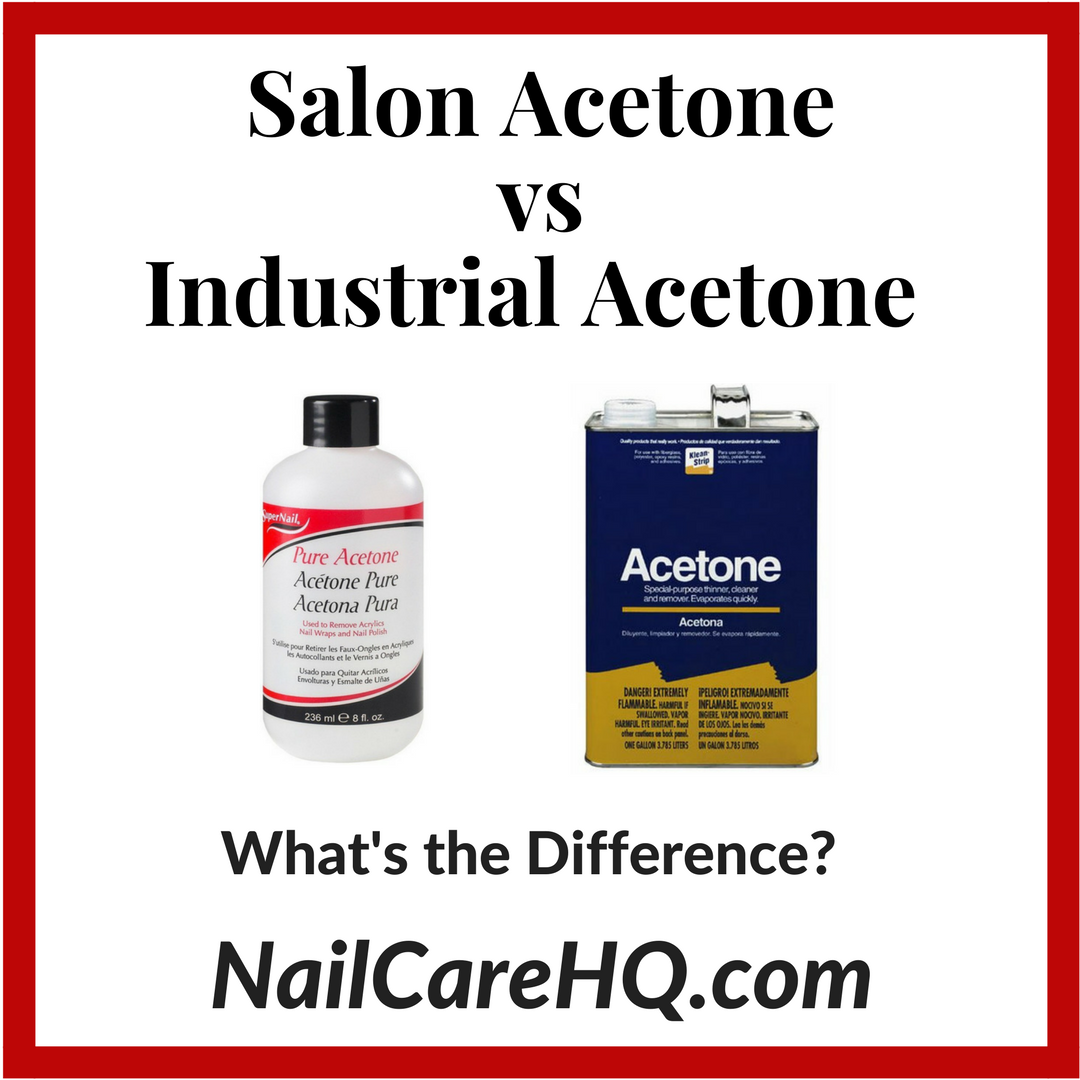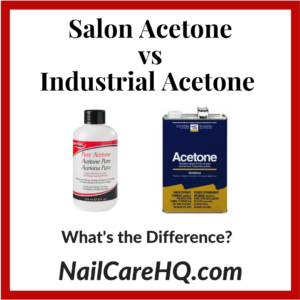PURCHASE ACETONE by Doug Schoon
Purchase Acetone – What’s Your Recommendation?
ASK DOUG
“I tell my students that acetone you buy at the pharmacy is not the same as the acetone you buy in the hardware store. People do buy them in the hardware stores because acetone is cheaper there. What are the facts?” ~anonymous nail instuctor
ANSWER
Good question. This is something I discuss in my book, Nail Structure and Product Chemistry.
The facts are, “Acetone is acetone”, but some acetone contains small amounts of other impurities.
For removing nail polish or coatings, the impurities usually don’t matter since their concentrations are so low.
Not All Is Created Equal
However, when acetone is used to clean the nail plate for better adhesion of nail enhancements like gel or acrylic, the impurities left behind when the acetone evaporates are often “oily”, which can make a BIG difference. Even regular nail polish adhesion can be affected.
Leaving small amounts of oily contaminants on the nail plate is the opposite of what acetone is supposed to do when the nail plate is being prepped for a nail coating.
Acetone is supposed to remove oily contaminants on the surface of the nail plate for better adhesion.
It is true that hardware store acetone is usually more contaminated than the acetone that is purchased in a pharmacy or beauty supply.
Nail professionals should use at least 99% acetone, but some companies sell poor grade acetone that is mislabeled as 100% acetone, when it is not.
How To Test Your Acetone
Therefore, I recommend that you test the grade you purchase to ensure it does not contain oily contaminants. This can be done safely, if you take appropriate care.
For example, fill a shot glass almost full with acetone, loosely cover the shot glass with a piece of photocopy paper and then set it somewhere to allow the acetone to “safely” evaporate.
In other words, keep this shot glass and any other acetone that you use away from all sources of excessive heat and avoid all sparks or flames to prevent a fire. If this is done, within a week the acetone should completely evaporate.
Then rub your finger inside the shot glass. If you feel any oily residue that suggests the acetone is likely not suitable for cleaning the nail plate since the oil can disrupt adhesion of products to the nail plate.
This is why I recommend using a professional nail cleanser, to ensure the plate is properly cleaned.
100% Acetone?
Sometimes people will tell me they only use 100% acetone, but interestingly, there is no such thing. The highest purity acetone that can be purchased is 99.9999%.
That’s pretty close to 100%, but this would be high purity scientific grade acetone and would cost 50-100 times that which is purchased in a store, so clearly 100% acetone is not sold to salons.
99% purity is fine for salon applications, as long as it doesn’t contain oily residues.
Isn’t Acetone Too Drying?
If you clean the nail plate or soaked the nail every day, it would likely be too dehydrating, but not the way it is used in salons.
That would likely be true for any remover. For salon or personal use, acetone is very effective and safe as long as it is used properly, e.g. avoiding excessive heat, flames or sparks.
The nails will pH balance themselves, so that’s not a concern at all with acetone.
The oily contaminants, not the acetone, are adhesion busters. In my view, acetone is a great solvent for use in salons and for home use. Ana wrote a helpful article why acetone is a better choice over non-acetone products here.
If you liked this article . . . please share!



This is good to know. Thanks. I have wondered what to get and this is helpful.